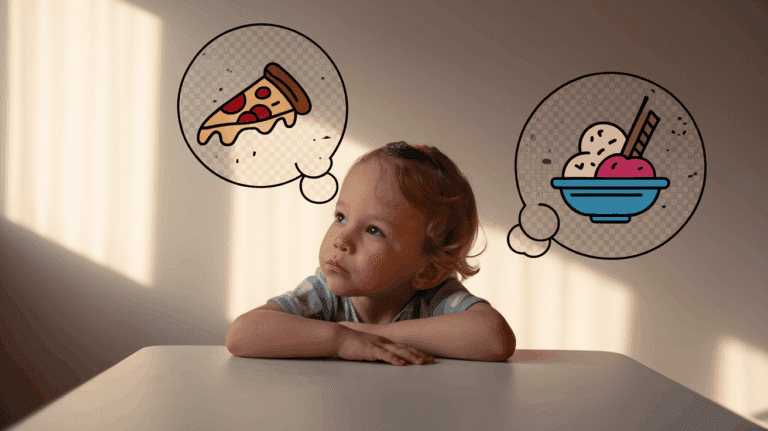Noticing the way a child reacts, plays, or solves simple everyday moments can reveal more than it seems at first glance.
Child strengths include social connection, emotional steadiness, curiosity, problem-solving, communication, and physical coordination.
These patterns appear in both quiet routines and active situations, shaping how a child grows and interacts.
Families looking into a child’s strengths, academic and non-academic, will see that strengths show up far beyond school tasks.
Each trait offers clues about how a child thinks and responds, leaving room for deeper insight as the days unfold.
What Are Child Strengths?
Child strengths are the natural abilities, traits, and tendencies that shape how children think, interact, and respond to the world around them.
These strengths often appear through patterns; how a child solves problems, expresses emotions, plays, or communicates.
They are not limited to academic skills; they include social, emotional, physical, and behavioral qualities that influence growth.
Common Child Strengths

Children show their strengths in many different ways, and these traits often shape how they learn, communicate, and build relationships.
These strengths can appear during play, daily routines, or moments of challenge, giving families a clearer view of what comes naturally to their child.
Want a simple version to keep handy? Download the PDF below.
Social Strengths
Children with strong social traits connect well with others and often bring ease to group settings.
- Empathy
- Cooperation
- Leadership
- Listening
- Conflict resolution
- Inclusiveness
- Encouraging peers
- Sharing and turn-taking
- Building friendships with ease
Emotional Strengths
Emotional strengths help children manage feelings, respond to change, and stay steady during challenges.
- Resilience
- Patience
- Adaptability
- Confidence
- Self-regulation
- Compassion
- Understanding others’ emotions
- Calming themselves after frustration
- Staying composed in new situations
If you want deeper insight into emotional growth, visit our blog on Understanding the Emotional Strengths of a Child.
Cognitive Strengths
These strengths influence thinking, problem-solving, and the way a child approaches tasks.
- Logical thinking
- Curiosity
- Problem-solving
- Memory
- Attention to detail
- Creativity (kept simple as allowed)
- Quick pattern recognition
- Strong observation skills
- Enjoying challenges or puzzles
Communication Strengths
These children express themselves clearly and connect through words, gestures, or storytelling.
- Verbal expression
- Storytelling
- Asking thoughtful questions
- Understanding instructions
- Strong vocabulary
- Nonverbal awareness
- Clear articulation of needs
- Active participation in conversations
- Ability to explain ideas simply
Physical Strengths
Physical strengths show in movement, coordination, or comfort with active tasks.
- Coordination
- Strength or flexibility
- Fine-motor control
- Active engagement
- Spatial awareness
- Endurance
- Balance
- Skill in sports or outdoor activities
- Comfort with hands-on tasks
Behavioral Strengths
These strengths appear through habits, motivations, and consistent patterns in behavior.
- Responsibility
- Independence
- Persistence
- Initiative
- Organization
- Following routines
- Completing tasks without reminders
- Staying focused during activities
- Handling transitions smoothly
Learning Strengths
Learning strengths reflect how a child absorbs and processes new information.
- Visual learning
- Hands-on learning
- Auditory learning
- Pattern recognition
- Fast comprehension
- Enjoying new concepts
- Strong recall
- Ability to practice without pressure
- Preference for structured or unstructured learning
How to Identify and Support Child Strengths?
Identifying child strengths begins with noticing consistent patterns in their daily behavior.
Families can observe how a child plays, solves problems, communicates, and reacts to new situations.
Strengths often appear in the activities they choose on their own, the tasks that keep them engaged, and the moments where they show confidence or comfort.
Insights from teachers and caregivers can also help clarify which traits come naturally.
By watching what energizes, calms, or excites a child, parents gain a clearer picture of the abilities that shape their growth.
Child Strength Training
Child strength training focuses on helping children build physical confidence through safe, age-appropriate movement.
It supports coordination, balance, endurance, and body awareness without pressuring a child to meet adult fitness standards.
Simple activities such as:
- climbing
- jumping
- carrying light objects
- or practicing controlled movements;
can strengthen muscles while keeping the experience fun and comfortable.
When guided properly, this type of training helps children move with more ease, reduces injury risk during play, and encourages healthy habits that support long-term physical development.
You can also read Educational Games for Schoolchildren – How to Turn Home Learning into Play for simple, engaging learning activities.
How to Recognize a Child’s Weakness With Care?
Recognizing a child’s weakness begins with quiet observation rather than judgment.
Children often show signs of struggle through hesitation, frustration, or avoidance when a task feels overwhelming or unfamiliar.
These moments can appear during schoolwork, play, social interactions, or daily routines.
Watching how a child reacts, how long they stay engaged, or which activities they resist can reveal areas that feel challenging for them.
Approaching these weaknesses with patience and openness helps children feel safe, supported, and understood.
When weaknesses are acknowledged gently, children gain confidence to try new strategies and slowly build comfort in areas that once felt difficult.
Also Read: Is Your Child Ready for Private School?
Closing Summary
Child strengths influence how children respond, solve problems, connect with others, and move through both academic and daily situations.
These strengths appear in simple routines, play, communication, and emotional moments, giving families a clearer sense of what feels natural for each child.
When parents notice these patterns and encourage them with steady support, children gain confidence and comfort in their abilities.
Have you noticed strengths that help your child move through daily life with ease or confidence?
Share your observations below and help other parents feel understood and supported.

















